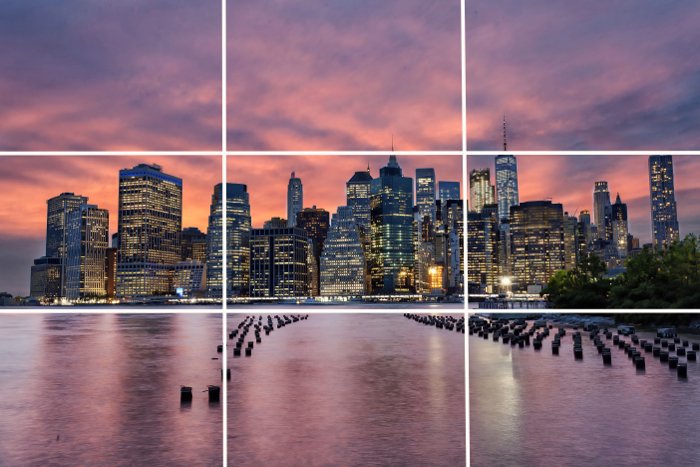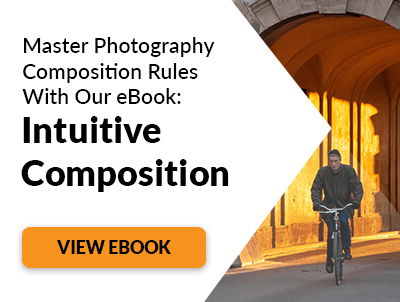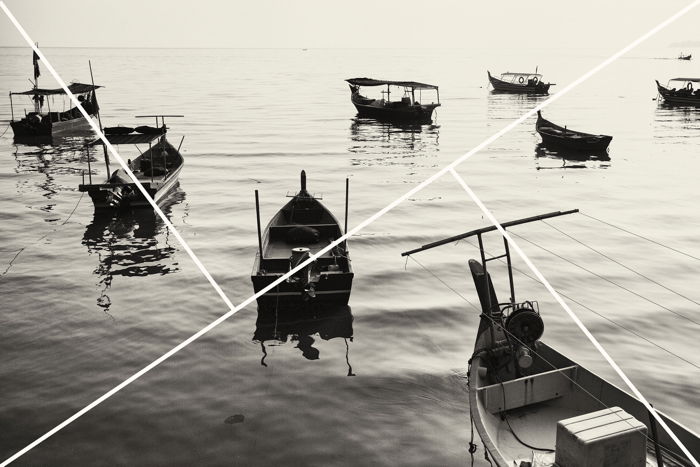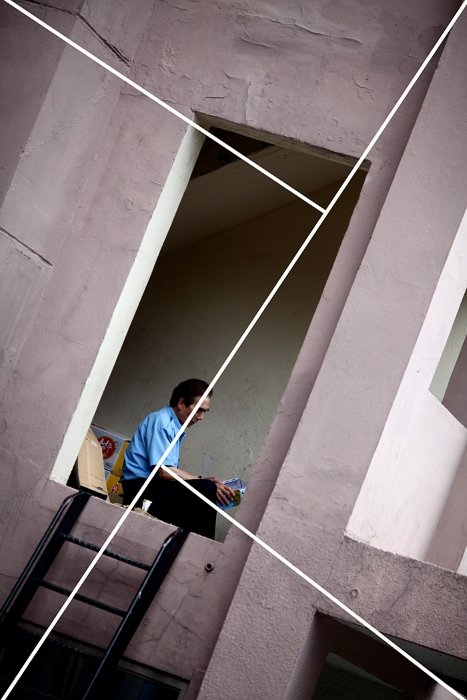In today’s article, you’ll learn how to apply golden triangle photography to your work.
Why Use the Golden Triangle in Photography?
You won’t go far wrong if you keep things to the main subject, with a simple background composed of the rule of thirds. But after a while, this formula can get a little repetitive. How might you break that up? One approach is to look at a variant of the rule of thirds, and that’s the golden triangle. With this type of composition, you’ll now be using diagonals in your photo. This will give your photo a more dynamic feel.
How Is the Golden Triangle Composition Formed?
The rule of thirds puts important elements in your frame on the lines that form the rule of thirds. These lines are formed using nine boxes of equal size across your frame. When it comes to the golden triangle, you’re now going to use triangles instead of boxes. This will create diagonals across your composition. Imagine your frame and draw a diagonal line from the top left corner, and draw it down to the bottom right corner. It doesn’t matter which corners, you need a diagonal line across your frame. Now from the bottom left corner draw a line up to the diagonal line, that intersects it at right angles. You can complete this line to the edge of your frame if you wish. Do the same thing with a line from the top right corner that also intersects the original line at right angles. You will now have triangles that form the photographic composition known as the golden triangle. This composition can also be formed with either a vertical or horizontal rectangle.
How Can You Compose a Photo for the Golden Triangle?
Once you have your grid set up for the golden triangle composition, you’ll notice the two intersection points. One to the left and one to the right of your composition. As with the rule of thirds, you’re aiming to put your point of interest over this point of intersection. Photos tend to have a point of interest and leading lines that run through them. This is how they should be handled for the golden triangle.
Point of interest—This is the main subject of your photo. For a portrait, the dominant eye should rest on one of these points—most likely the one towards the top of the frame. Landscape subjects like lone trees or a house would sit on the intersection point. Leading lines—The line that leads up to the subject is now important. This is what makes your photo a golden triangle composition as opposed to the rule of thirds. So you’re looking for a diagonal line that leads to your main subject. This could be a variety of things. In landscape photography, a road that diagonally cuts through your frame to the main subject would be ideal.
Which Subjects Work Best for this Composition?
There are locations where golden triangle composition is only possible with Dutch angles. Dutch angles are not everyone’s idea of a good photo. So what type of photos will work for this type of photo? Below are a few ideas for you, though as with every art form, in the end, you’ll have to use your own judgement.
Portraits—A standard portrait probably won’t work here. You’ll have too many straight lines. Instead, look at portraits where the model is sitting or laying down. You can play with the angles to create diagonals. You should also be looking to use the arms and legs to create the diagonals that form the golden triangles. Mountains—When your horizon line isn’t flat you have more options for forming the golden triangle composition. Use a diagonal horizon line that leads towards your main subject. You don’t have to use mountains, you can also use a sand dune in much the same way. A road—You can use a road that cuts through your frame at a diagonal to produce a golden triangle composition. Standing to the side of the road is one way to make the road run through your frame diagonally. If you can get above the road and remove the horizon line, this may also help with composition.
Common Questions About Photography Composition
What Is Meant by the Golden Triangle?
The golden triangle is a composition rule. This rule is somewhat like the rule of thirds. The way the photo is divided is a little different though. Instead of straight lines, a series of diagonal lines that form right-angle triangles act as a composition guide. The main subject of the photo should sit on the intersection of these triangles.
What Are the Seven Elements of Photography?
This refers to the basic components of a good photo, you might want to call these design elements. These elements are color, shape, lines, form, texture, space and contrast. Every photo you take will use some or even all these elements to create a compelling image.
How Is Golden Ratio Used in Photography?
The golden ratio is an alternative way of composing a photo. It’s based around rectangles within rectangles that decrease in size through the composition. When you apply this rule in photography, sections of the photo line up. As you look more towards the subject of the photo, the components continue to line up to this golden ratio.
Conclusion
Getting a strong composition is key to good photography. It’s important to try out different ways to frame a photo. At first, it will be difficult to see in this new composition. But the more you practice, the easier it will become. It’s a bit like learning a new language, only this is a visual language. With practice, the new composition type will become part of your subconscious. As with everything in life, it’s good to try new things and expand your horizons. This is the route to improving your work. So try out the golden triangle, and see where it takes your photography. Check out our Intuitive Composition e-book to master composing your photos!






